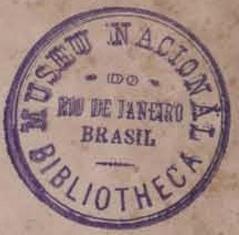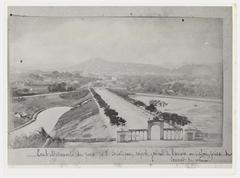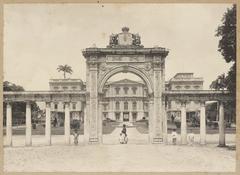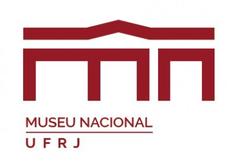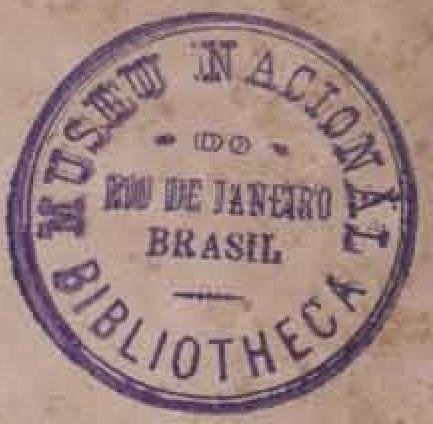
Museu Nacional Rio de Janeiro: Visiting Hours, Tickets, History, and Travel Guide
Date: 14/06/2025
Introduction
The Museu Nacional (National Museum of Brazil) stands as a beacon of Brazil’s cultural, scientific, and historical legacy. Founded in 1818, it is the country’s oldest scientific institution and one of the largest museums in Latin America. Housed in the historic Paço de São Cristóvão within the lush Quinta da Boa Vista park in Rio de Janeiro, its collections once encompassed more than 20 million artifacts spanning natural history, anthropology, and archaeology. Despite the devastating fire of 2018, the museum’s restoration is a symbol of resilience and commitment to preserving Brazil’s heritage. This comprehensive guide details the museum’s history, practical visiting information, restoration updates, travel tips, accessibility, and nearby attractions, helping you plan a meaningful visit to one of Rio de Janeiro’s most significant historical sites (Wikipedia, Smithsonian Magazine, UNESCO).
Historical Overview
Foundation and Royal Origins
Established on June 6, 1818, by King João VI of Portugal, the museum began as the Royal Museum, with the mission to promote scientific research, education, and national identity. Initially housed at Campo de Santana and later moving to the Paço de São Cristóvão, the museum reflected Enlightenment values and was central to Brazil’s progress as a modern nation (Wikipedia, Metropolitan Museum of Art).
The Paço de São Cristóvão
The museum’s current home, the neoclassical Paço de São Cristóvão, was once the residence of Portuguese and Brazilian royalty. After the monarchy ended, the palace became the museum’s seat in 1892, further enriching its historical significance.
Growth and Collections
Over the 19th and 20th centuries, the museum expanded its collections to include anthropology, ethnology, paleontology, archaeology, and natural sciences. Its notable holdings included the Luzia Woman (the oldest human fossil in the Americas), Egyptian mummies, Greco-Roman artifacts, and extensive indigenous and African collections (Smithsonian Magazine, Google Arts & Culture).
The 2018 Fire and Restoration
The Fire’s Impact
On September 2, 2018, a devastating fire destroyed approximately 92.5% of the museum’s collection, including irreplaceable fossils, historical documents, and cultural artifacts. While treasures like the Bendegó meteorite and parts of the Luzia Woman’s remains survived, the loss was a national tragedy, highlighting chronic underfunding and the urgent need for heritage preservation (Smithsonian Magazine, National Geographic).
Restoration Efforts
The “Museu Nacional Vive” project, led by the Federal University of Rio de Janeiro in partnership with UNESCO, Fundação Vale, and other organizations, has driven restoration and revitalization. Funding from the Brazilian Development Bank, government bodies, and private donors supports the architectural renewal and the salvage of surviving collections (UNESCO, The Art Newspaper).
By September 2022, key restoration milestones included the unveiling of the palace façades, roofs, and rooftop sculptures. The full reopening is expected by 2027, with phased access to outdoor areas and temporary exhibitions in the meantime.
Visiting Information
Location and Access
- Address: Quinta da Boa Vista, São Cristóvão, Rio de Janeiro, RJ, Brazil
- Metro: São Cristóvão station (walking distance)
- Bus/Taxi/Rideshare: Widely available
- Parking: Limited; public transport recommended due to traffic congestion (Owl Over The World)
Visiting Hours (As of June 2025)
- Outdoor Areas & Temporary Exhibits: Tuesday–Sunday, 10:00 AM–5:00 PM
- Closed: Mondays and select holidays
- Note: Main exhibition halls remain closed during restoration. Check the official website for updates.
Tickets and Entry
- General Admission: Free or discounted for outdoor and temporary exhibits during restoration
- Full Admission (upon reopening): Approx. R$20, with concessions for students, seniors, and children
- Purchase: On-site or via the official website
- Payment: Cash (Brazilian reais) preferred; some counters may not accept foreign cards
Accessibility
The museum is implementing ramps, elevators, and accessible restrooms as part of restoration. Some areas may still present challenges—contact the museum in advance for specific accessibility needs. Guided tours for visitors with disabilities are available upon request.
Guided Tours and Educational Programs
- Guided Tours: In Portuguese; English and Spanish available by advance request. Tours highlight the museum’s history, architecture, and ongoing restoration.
- Workshops/Lectures: Regular educational events for all ages, with special focus on restoration and cultural preservation.
- Virtual Content: Online exhibitions, interactive resources, and digital tours are available during closure (Google Arts & Culture).
Collections and Exhibitions
Highlights (Pre-Fire)
- Luzia Woman: Oldest human fossil in the Americas
- Bendegó Meteorite: Largest meteorite found in Brazil, survived the fire
- Egyptian Mummies and Mediterranean Artifacts
- Indigenous and Afro-Brazilian Cultural Collections
- Paleontological and Archaeological Specimens
Current Displays
Temporary outdoor exhibits and select salvaged artifacts are showcased during restoration. The museum prioritizes digital engagement and rotating displays in collaboration with partner institutions (Google Arts & Culture, Museu Histórico Nacional Official Site).
Facilities and Visitor Services
- Restrooms: Available in park; follow local waste disposal customs (Owl Over The World)
- Café: Serves snacks and beverages
- Gift Shop: Books, souvenirs, and educational items
- Lockers/Cloakroom: Limited during restoration
Safety, Security, and Practical Tips
- Security: On-site staff and CCTV; increased presence during events
- Personal Safety: Keep valuables secure, avoid displaying expensive items, and remain alert in crowded areas (Owl Over The World)
- Health: Use insect repellent, carry hand sanitizer, and stay hydrated
- Weather: Dress for Rio’s tropical climate and use sunscreen
- Language: Portuguese is primary; basic phrases or translation apps help
- Photography: Permitted in designated areas (non-flash), check for restrictions
- Connectivity: Free Wi-Fi in some public areas; consider a local SIM card (Reddit)
Best Times to Visit
- Peak Hours: 10:00 AM–2:00 PM; quieter visits early morning or late afternoon, especially midweek
- High Season: December–March and Carnival period; expect larger crowds (ChewsToExplore)
Nearby Attractions
- Quinta da Boa Vista Park: Gardens, walking trails, and lakes
- Museu Histórico Nacional: In-depth Brazilian history exhibits
- Museu de Arte do Rio: Modern and contemporary art
- Royal Portuguese Reading Room: Architectural gem
- Rio Zoo: Family-friendly attraction
Explore these sites to enrich your Rio cultural itinerary (Lonely Planet).
Sustainability and Responsible Tourism
Support the museum’s restoration by minimizing waste, recycling, and purchasing from local artisans. Donations and participation in educational programs help preserve Brazil’s heritage.
Frequently Asked Questions (FAQs)
Q: What are the current visiting hours?
A: Outdoor areas and temporary exhibits are open Tuesday–Sunday, 10:00 AM–5:00 PM. Full reopening is expected by October 2025. Check the official website for updates.
Q: How do I purchase tickets?
A: Entry is free or discounted during restoration. When fully operational, tickets can be purchased on-site or online.
Q: Is the museum accessible for visitors with disabilities?
A: Accessibility improvements are ongoing. Contact the museum in advance for specific needs.
Q: Are guided tours available?
A: Yes, in Portuguese, with English/Spanish by request. Book in advance for group or educational tours.
Q: What else can I do nearby?
A: Explore the park, visit neighboring museums, and enjoy São Cristóvão’s cultural sites.
Essential Contacts
- Website: museunacional.ufrj.br
- Phone: +55 (21) 3299-0324
- Email: [email protected]
Visual and Digital Resources
- Virtual Tours & Collections: Google Arts & Culture
- Official Updates & Events: Museu Nacional Vive/UNESCO
- Suggested Images for SEO:
- “Museu Nacional São Cristóvão Palace exterior”
- “Bendegó meteorite at Museu Nacional”
- “Marajoara ceramics from Museu Nacional collection”
- “Virtual tour of Museu Nacional Brazil”
Conclusion
The Museu Nacional’s journey—from royal origins and scientific leadership to tragedy and renewal—reflects Brazil’s enduring commitment to its cultural legacy. As restoration progresses, visitors can actively participate in its revival through educational programs, outdoor exhibits, and digital resources. Stay informed via the museum’s website and social media channels, and plan your visit to experience a living chapter of Brazilian history.
For audio guides, personalized travel tips, and updates on Rio’s historical sites, download the Audiala app and explore our related articles.
Reliable Sources and Further Reading
- Wikipedia
- Smithsonian Magazine
- UNESCO
- Metropolitan Museum of Art
- Google Arts & Culture
- Owl Over The World
- Lonely Planet
- ChewsToExplore
- The Art Newspaper
- National Geographic
